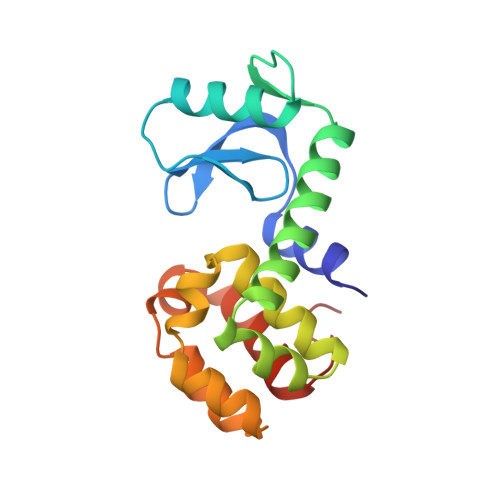A cavity-containing mutant of T4 lysozyme is stabilized by buried benzene.
Eriksson, A.E., Baase, W.A., Wozniak, J.A., Matthews, B.W.(1992) Nature 355: 371-373
- PubMed: 1731252
- DOI: https://doi.org/10.1038/355371a0
- Primary Citation of Related Structures:
1L83, 1L84 - PubMed Abstract:
The hydrophobic cores of proteins are generally well packed, with few cavities. Mutations in which a bulky buried residue such as leucine or phenylalanine is replaced with a small residue such as alanine can create cavities in the core of a protein (our unpublished results). The sizes and shapes of such cavities can vary substantially depending on factors such as local geometry, whether or not a cavity already exists at the site of substitution, and the degree to which the protein structure relaxes to occupy the space vacated by the substituted residue. We show by crystallographic and thermodynamic analysis that the cavity created by the replacement Leu 99----Ala in T4 lysozyme is large enough to bind benzene and that ligand binding increases the melting temperature of the protein by 6.0 degrees C at pH 3.0. Benzene does not, however, bind to the cavity created by the Phe 153----Ala replacement. The results show that cavities can be engineered in proteins and suggest that such cavities might be tailored to bind specific ligands. The binding of benzene at an internal site 7 A from the molecular surface also illustrates the dynamic nature of proteins, even in crystals.
Organizational Affiliation:
Institute of Molecular Biology, Howard Hughes Medical Institute, University of Oregon, Eugene 97403.

















